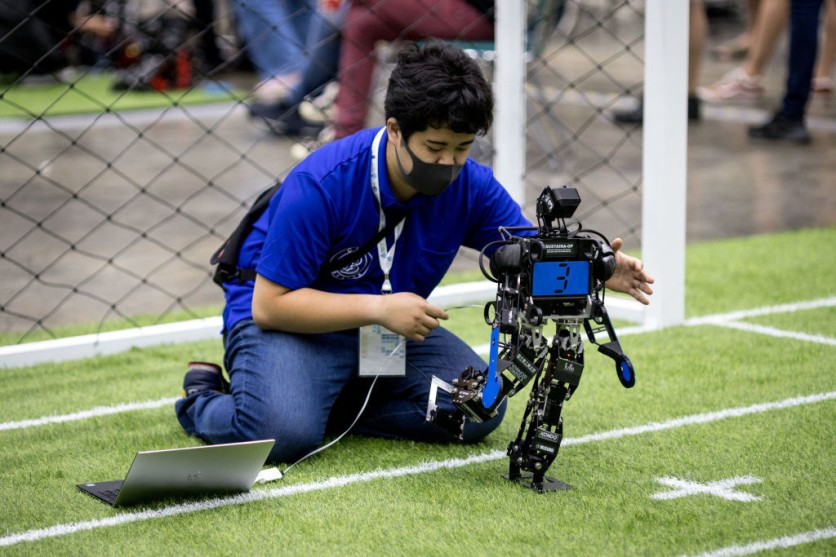Researchers at Northwestern University's Center for Robotics and Biosystems have developed the Omni Mocobots. These are collaborative mobile robots that are designed to cooperate with each other and with humans to pick up, handle, and transport delicate and flexible payloads, according to TechXplore.

The robots may be extremely useful to the manufacturing and transportation industry. In fact, the robots were inspired by the current workload in the manufacturing, warehouse, and construction industry that involved manipulating large, flexible objects.
With the collaboration between humans and robots, it will merge the strength and precision of the robots with the situational awareness and adaptability of human users.
The Omnid Mocobot
The new robotic system has a mobile base and a robotic arm. It has three important features that set it apart from other robots. The first is the robot arms with built-in mechanical compliance.
The softness allows the robots to be safer for human interaction and make them less likely to cause damage compared to the typical robot arms.
Second, the robot arms have precisely-controlled forces at their grippers. And the third, the control laws governing the mobile base and manipulator allow teams of Omnids to render a huge object weightless to the human.
Also Read: Researchers Develop an AI with Human-Like Eyes, Can Be Used for Robots and EVs
The Initial Tests
During the initial tests, the researchers evaluated the performance of the robots as they collaborated with humans and other robots on various tasks that involved the manipulation of huge payloads.
The results shows that when they collaborate with three of their robots, a single human can transport and precisely assemble a 15 kg pipe into a fixture with just one hand.
This is because the collaborative manipulation with the robots is intuitive for the humans, so the human doesn't need training. Also, the omnids don't have to be reprogrammed for tasks with various types of payloads.
The Future of the Robots
The researchers see a large team of even more powerful Omnids that will allow one or a small number of humans to assemble big structures. This will allow humans to summon the robots to grasp the object and what the human will do is to guide the assembly while the robots do most of the work that requires force.
With this, the robots may soon be used to complete a lot of collaborative manipulation tasks that involve a human. Currently, the robots are not capable of autonomously manipulating objects with the use of preprogrammed controllers or strategies by observing humans. This is why it will be one of their goals for future research to make the robots even more useful.
Related Article: Self-Awareness in Robots? This Robot Learns to Understand Itself Without Human Assistance
This article is owned by TechTimes
Written by April Fowell
ⓒ 2025 TECHTIMES.com All rights reserved. Do not reproduce without permission.




